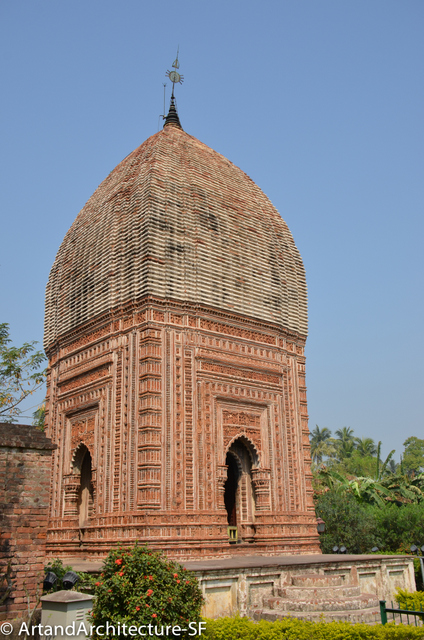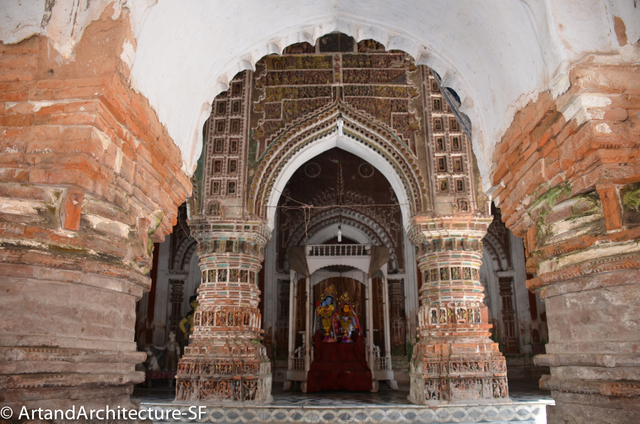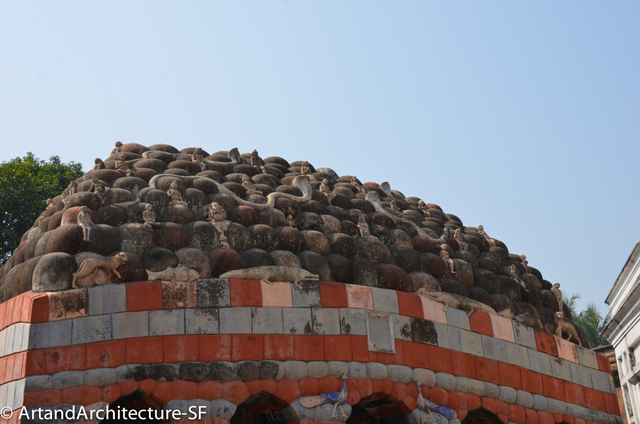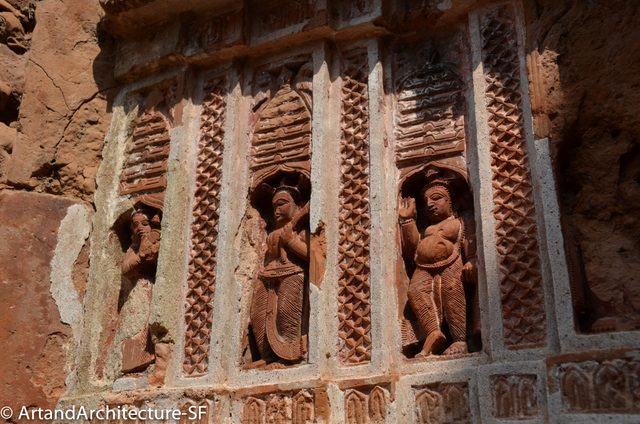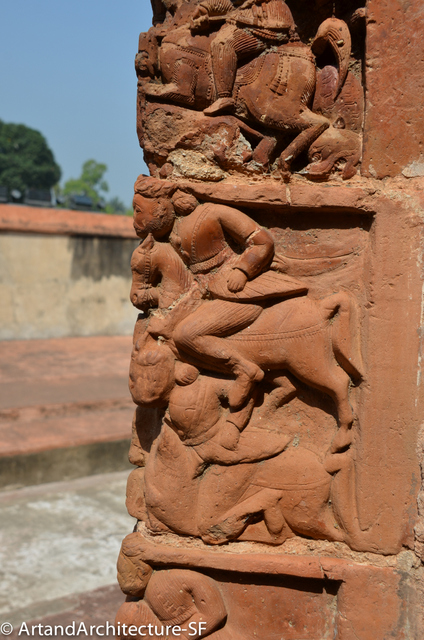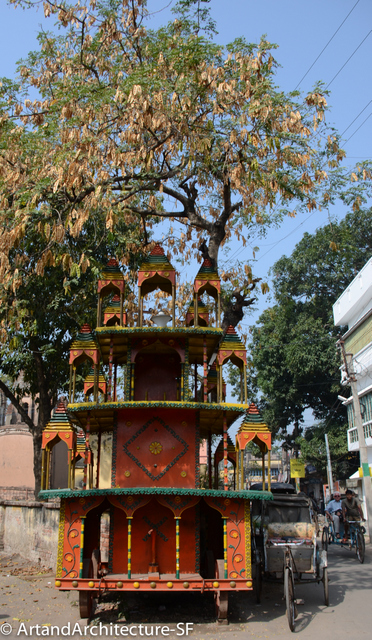February 2013
 Our only stop today was Kalna or Ambika Kalna called the “Temple Town”, and dedicated to the goddess of power, Maa Kali.
Our only stop today was Kalna or Ambika Kalna called the “Temple Town”, and dedicated to the goddess of power, Maa Kali.
After disembarking at the only available ghat, which obviously served as the garbage dump, we had a fun rickshaw ride to the Rajbari temple complex.
 The complex contains a unique mixture of Bengali temple architecture. On one side of the road are the Nabakailas Temples. Built by Maharaja Teja Chandra Bahadhur in 1809 to celebrate the transfer and ownership of the royal estate of Bishnupur. The Rajbari complex is architecturally amazing, the temple structure is made up of two concentric circles, with 108 small aat-chala, or eight-sided slopped roofed temples dedicated to Lord Shiva. These individual temples represent beads in the mala.
The complex contains a unique mixture of Bengali temple architecture. On one side of the road are the Nabakailas Temples. Built by Maharaja Teja Chandra Bahadhur in 1809 to celebrate the transfer and ownership of the royal estate of Bishnupur. The Rajbari complex is architecturally amazing, the temple structure is made up of two concentric circles, with 108 small aat-chala, or eight-sided slopped roofed temples dedicated to Lord Shiva. These individual temples represent beads in the mala.
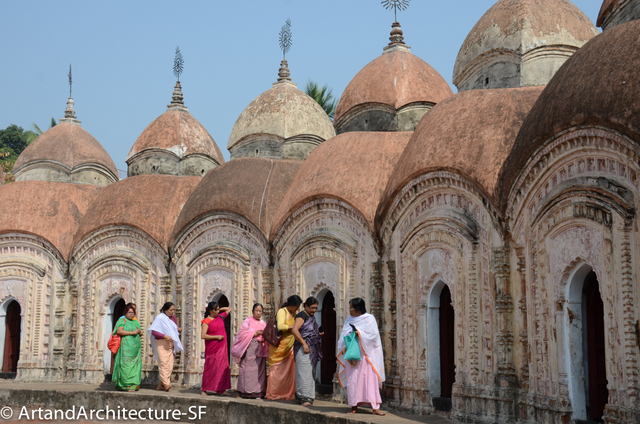 The outer circle has seventy-four temples and the inner one has thirty-four temples. Each of these 108 temples has a Shiva linga. The lingas in the inner circle are all white (symbolizing good deeds), while every other one in the outer circle is black (symbolizing sins).
The outer circle has seventy-four temples and the inner one has thirty-four temples. Each of these 108 temples has a Shiva linga. The lingas in the inner circle are all white (symbolizing good deeds), while every other one in the outer circle is black (symbolizing sins).
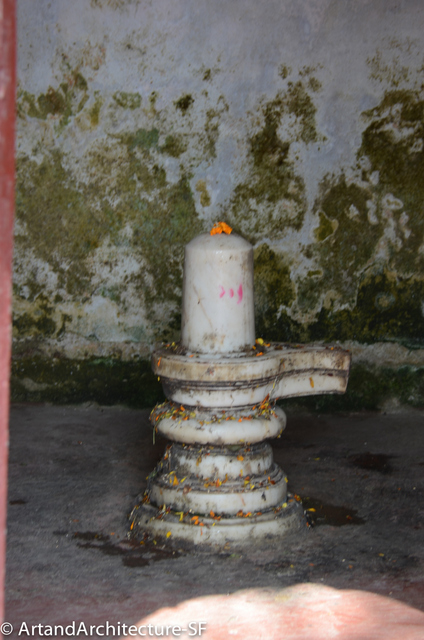 A linga must point to the north, so you will notice how they move position as I walk around the circle of temples.
A linga must point to the north, so you will notice how they move position as I walk around the circle of temples.
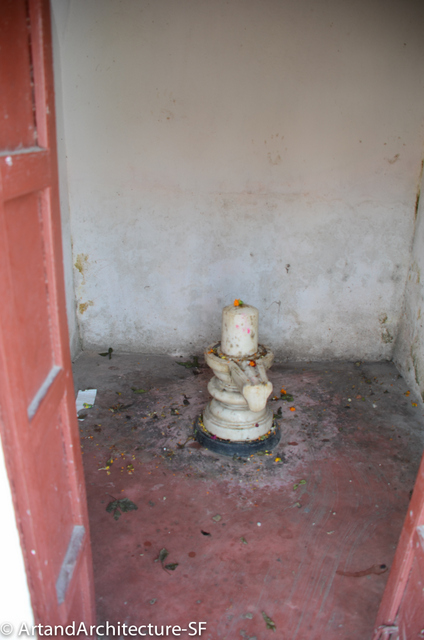 It is always preached that a human with his faith can connect to the Almighty through his sincere prayers and meditation. To attain solace, one needs to come over all worldly interests and wholly and solely dedicate his life towards the attainment of God. The same concept is being advocated through this temple structure. The outer circle portrays the world we live in while the inner circle symbolizes the world with pure thoughts, attained by offering prayers to Lord Shiva.
It is always preached that a human with his faith can connect to the Almighty through his sincere prayers and meditation. To attain solace, one needs to come over all worldly interests and wholly and solely dedicate his life towards the attainment of God. The same concept is being advocated through this temple structure. The outer circle portrays the world we live in while the inner circle symbolizes the world with pure thoughts, attained by offering prayers to Lord Shiva.
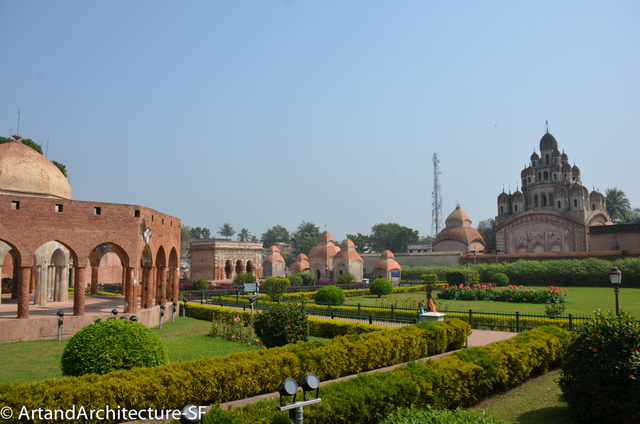 On the other side of the road is a walled complex with several temples. Pratapeshwar temple, built in 1849 contains a plethora of terra cotta plaques depicting themes of Hindu epics, the mythical life of Sree Chaitanya, images of Durga and various aspects of day-to-day life. The other temples are the Lalji temple built in 1739, the Krishnachandra temple built in 1751 and a flat roofed temple Giri Govardhan.
On the other side of the road is a walled complex with several temples. Pratapeshwar temple, built in 1849 contains a plethora of terra cotta plaques depicting themes of Hindu epics, the mythical life of Sree Chaitanya, images of Durga and various aspects of day-to-day life. The other temples are the Lalji temple built in 1739, the Krishnachandra temple built in 1751 and a flat roofed temple Giri Govardhan.
While visiting the Krishnachandra Temple our guide showed us where a chunk had been hacked out of the side in the last two weeks, an excellent example of the art theft that is rampant in India. There are over 50,000 pieces of art looted from India every year.
*
*
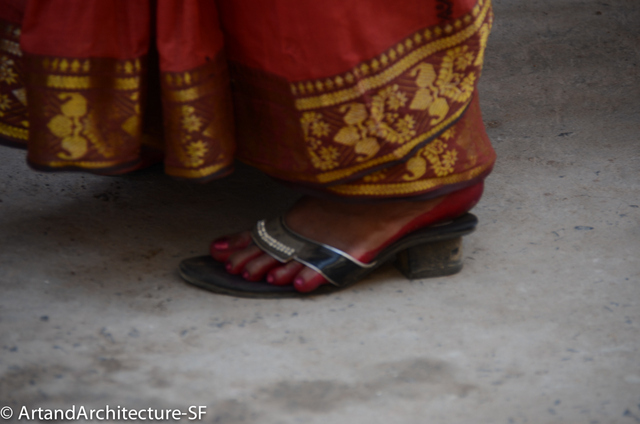
Alta is a bright red dye or liquid color used to adorn palms and feet in simple patterns. Painting the soles with this red liquid dye is a common Indian tradition, particularly during religious festivals and weddings. A common ritual followed by the womenfolk in West Bengal, Alta is also known as Mahavar, which is dark pink in color. A Bengali bride is incomplete if her hands and feet are not adorned with Alta. As brides from other regions are not complete without Mehendi or Henna.

